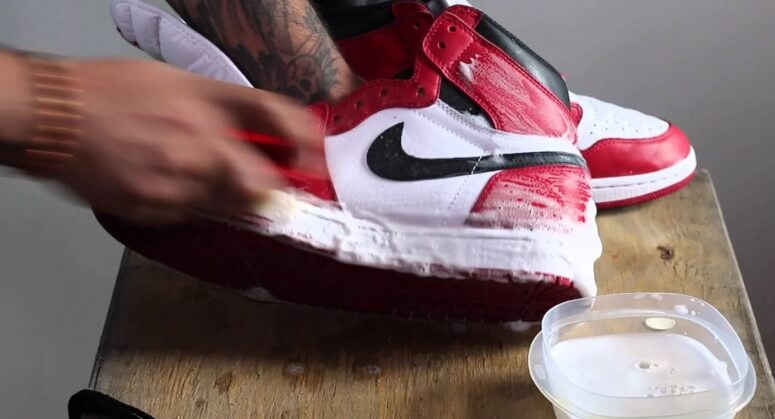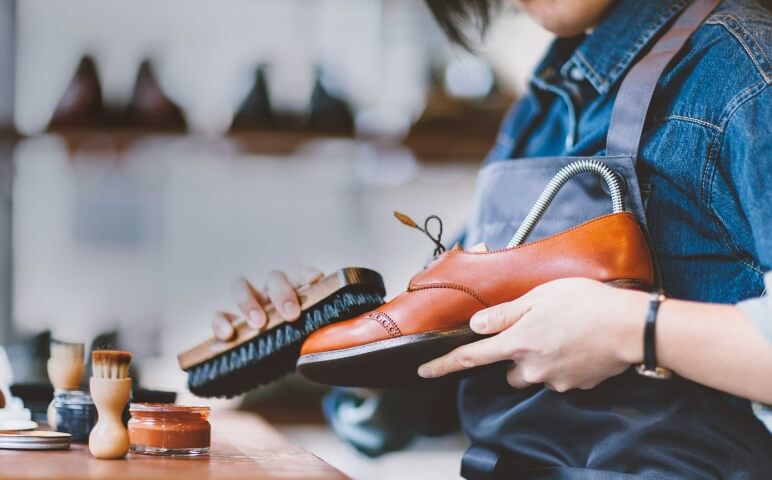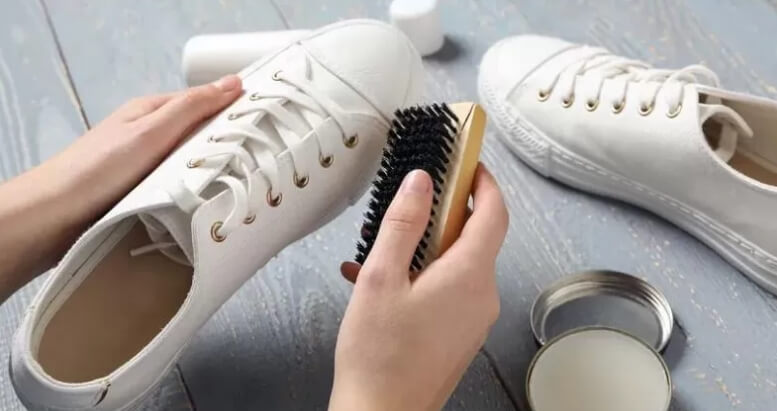In a world where sustainability is becoming increasingly important, used shoes care is a topic that deserves attention. As more consumers turn to secondhand footwear, understanding how to properly maintain and repair these shoes can significantly extend their lifespan. This ultimate guide will provide you with essential tips and tricks to keep your used shoes looking their best while promoting eco-friendly practices.
Understanding Different Types of Used Shoes
When it comes to used shoes care understanding the different types of used footwear is essential for effective maintenance and repair. Each type of shoe—be it leather, sneakers, boots, or sandals—requires specific care techniques to keep them in optimal condition. For instance, leather shoes benefit from regular conditioning to prevent cracking, while sneakers may need special cleaning products to tackle stubborn stains without damaging the fabric. Boots often require attention to their soles and waterproofing, especially if they’re exposed to harsh weather conditions. By recognizing the unique needs of each shoe type, you can implement tailored strategies that enhance their longevity and ensure they remain stylish and functional for years to come.
Leather Shoes
When it comes to used shoes care, leather shoes require particular attention to maintain their elegance and durability. Regular cleaning with a soft cloth helps remove dirt, while a quality leather conditioner can prevent cracking and dryness. It’s essential to store leather shoes in a cool, dry place and use shoe trees to maintain their shape. Additionally, applying a waterproofing spray can protect them from moisture damage, ensuring they remain a staple in your wardrobe for years.
Sneakers
For those who love athletic and casual styles, used shoes care for sneakers involves a different approach. Regularly wiping them down with a damp cloth can keep them looking fresh, while machine washing is often suitable for canvas styles. Using a specialized cleaner for more delicate materials helps prevent wear. It’s also beneficial to rotate your sneakers to avoid excessive wear on a single pair, allowing them to breathe and maintain their form over time.
Boots
Used shoes care for boots is crucial, especially if they’re exposed to outdoor elements. Regularly cleaning them with a damp cloth and applying a water-repellent treatment can enhance their lifespan. Pay special attention to the soles, as they may require more frequent inspections and repairs. Storing boots with proper support, such as boot trees, can help maintain their structure and prevent creasing, ensuring they stay stylish and functional through many seasons.
Sandals
When considering used shoes care for sandals, it’s important to focus on cleaning and preventing odor. Regularly washing the straps and footbeds with mild soap can keep them hygienic. Depending on the material, conditioning leather straps can prevent them from becoming brittle. Additionally, storing sandals in a well-ventilated area helps to avoid moisture buildup, ensuring they remain comfortable and ready for wear whenever you need them.
Basic Cleaning Techniques for Used Shoes
In the realm of used shoes care, mastering basic cleaning techniques is essential for maintaining the appearance and longevity of your footwear. Start by gathering the right materials, such as soft brushes, microfiber cloths, and gentle cleaning solutions tailored to the shoe’s material. For leather shoes, a damp cloth followed by a leather conditioner can restore shine, while sneakers may require a brush and a mild detergent to tackle stubborn stains. Boots often benefit from a thorough scrub of the soles and the application of waterproofing treatments after cleaning. Sandals should be washed with soap and water, ensuring the footbeds are scrubbed to eliminate odors. By incorporating these straightforward cleaning methods into your routine, you can keep your used shoes looking fresh and extend their lifespan significantly.
Materials Needed for Cleaning
When it comes to effective Used Shoes Care, having the right materials on hand is essential for thorough cleaning. Basic supplies include a soft-bristled brush, microfiber cloths, mild soap or specialized shoe cleaner, and water. For leather shoes, consider adding leather conditioner and a waterproofing spray to your toolkit. Sneakers may require a toothbrush for scrubbing tough stains, while boots can benefit from a rubber cleaning sponge. By equipping yourself with these materials, you’ll be prepared to tackle various cleaning challenges and keep your used shoes looking their best.
Step-by-Step Cleaning Process
A systematic approach to cleaning is key in used shoes care. Start by removing any loose dirt and debris using a soft brush. For leather shoes, dampen a cloth with water and mild soap, gently wiping the surface to remove grime. For sneakers, mix a small amount of cleaner with water and use a brush to scrub the fabric, paying attention to the soles. Rinse off any soap residue with a clean damp cloth. For boots, focus on both the upper material and soles, ensuring they are free from mud and dirt. Allow all shoes to air dry properly before storing them, enhancing their longevity.
How to Remove Stains Effectively
Stains can be a nightmare for used shoes care, but with the right techniques, you can tackle them effectively. Start by identifying the material of your shoes, as different fabrics require different treatments. For fabric sneakers, a mixture of baking soda and water can create a paste that effectively lifts tough stains. For leather, use a specialized cleaner designed for the material, applying it gently with a microfiber cloth. Always test any cleaning solution on a small, inconspicuous area first to ensure it won’t damage the shoe. By using these targeted stain removal strategies, you can restore your shoes to their former glory.
Easy Repairs for Common Issues
In the realm of used shoes care, addressing common issues with easy repairs can significantly enhance the lifespan and appearance of your footwear. One of the most frequent problems is scuffs and scratches, particularly on leather shoes. A quick application of matching shoe polish can work wonders, restoring their original look. Additionally, replacing worn-out laces is a simple yet effective way to refresh your shoes; choose colorful or patterned laces for a fun update. For shoes with loose soles, a strong adhesive can often fix the problem; just make sure to follow the instructions carefully. By mastering these straightforward repair techniques, you can keep your used shoes in excellent condition while saving money on replacements.
Fixing Scuffs and Scratches
One common issue in used shoes care is dealing with scuffs and scratches, especially on leather and synthetic materials. For minor scuffs, a simple application of a matching color shoe polish can work wonders, restoring the shoe’s appearance. For deeper scratches, consider using a leather repair kit that includes filler and color matching compounds. Gently apply the filler to the damaged area and blend it in, allowing it to dry completely. This proactive approach not only enhances the visual appeal of your shoes but also helps protect the material from further damage.
Replacing Laces and Insoles
In the world of used shoes care, replacing laces and insoles is an easy yet impactful way to rejuvenate your footwear. Worn or frayed laces can detract from the overall look, so opt for new laces that match or contrast creatively with your shoes. Similarly, insoles play a crucial role in comfort and support; replacing them can significantly improve your walking experience. Choose insoles that offer the right arch support for your foot type, ensuring your used shoes feel fresh and comfortable, enhancing their longevity and usability.
Repairing Soles: When to DIY vs. Seek Help
When it comes to used shoes care, knowing when to tackle sole repairs yourself and when to seek professional help can save you time and money. Minor issues, such as small separations or surface damage, can often be handled with DIY methods using strong adhesives or repair kits. However, if the damage involves structural integrity or complex repairs, such as heel replacements or significant sole detachment, it’s wise to consult a cobbler. Understanding these boundaries ensures your shoes receive the right level of care, prolonging their life without risking further damage.

Long-Term Maintenance Tips
Long-term maintenance is a crucial aspect of used shoes care, ensuring that your footwear remains in excellent condition for years to come. One of the key tips is to store your shoes properly; keep them in a cool, dry place, preferably in their original boxes or on a shoe rack, to prevent deformation. Regularly inspecting your shoes for signs of wear, such as fraying laces or loose soles, allows you to address issues before they escalate. Additionally, consider rotating your shoes to give them a break and allow the materials to breathe. Using cedar shoe trees can help maintain their shape and absorb moisture. By implementing these long-term maintenance practices, you can significantly extend the life of your used shoes and keep them looking fresh and stylish.
Proper Storage Solutions
Proper storage is a vital component of used shoes care, as it directly impacts the longevity of your footwear. To keep your shoes in top shape, store them in a cool, dry place away from direct sunlight, which can cause fading and material degradation. Utilizing original boxes or breathable fabric dust bags helps protect them from dust and moisture. For boots, consider using boot trees or stuffing them with tissue paper to maintain their shape. By implementing these storage solutions, you can significantly reduce wear and tear, ensuring your used shoes remain ready for wear whenever you need them.
Regular Inspections and Care Routines
Incorporating regular inspections into your used shoes care routine can prevent small issues from becoming major problems. Schedule time to examine your shoes every few weeks for signs of wear, such as loose stitching, damaged soles, or fraying laces. By catching these issues early, you can take appropriate action, whether it’s a simple cleaning or a minor repair. Additionally, establishing a consistent cleaning schedule—based on how often you wear each pair—ensures that your shoes receive the attention they need. This proactive approach not only keeps your footwear looking great but also enhances its overall lifespan.

Protecting Shoes from Environmental Damage
Environmental factors can significantly affect the condition of your footwear, making protection a crucial aspect of used shoes care. To shield your shoes from water, dirt, and UV rays, consider applying a waterproofing spray suitable for the shoe material. For leather shoes, regular conditioning can prevent drying and cracking, while sneakers may benefit from protective coatings to repel stains. Additionally, during extreme weather, try to limit exposure to rain and snow, as these elements can cause irreversible damage. By taking these protective measures, you can maintain the integrity of your used shoes and keep them looking their best for longer.
Eco-Friendly Practices in Used Shoes Care
Incorporating eco-friendly practices into used shoes care is essential for promoting sustainability while maintaining your footwear. One effective method is to choose natural cleaning products that minimize environmental impact; vinegar and baking soda can work wonders for deep cleaning without harsh chemicals. Additionally, consider upcycling or donating old shoes instead of discarding them, giving them a second life and reducing waste. When repairing, opt for sustainable materials and adhesives, ensuring that your shoe maintenance is both effective and environmentally friendly. By adopting these eco-conscious strategies, you can extend the life of your used shoes while contributing to a healthier planet.
Sustainable Products for Cleaning and Repair
When it comes to used shoes care, choosing sustainable products for cleaning and repair can make a significant difference. Look for eco-friendly shoe cleaners made from natural ingredients that effectively remove dirt and stains without harming the environment. For repairs, consider using biodegradable adhesives and organic materials to patch up worn areas. These choices not only enhance the longevity of your footwear but also reduce your carbon footprint. By opting for sustainable products, you contribute to a greener planet while ensuring your used shoes remain in top condition.

Upcycling and Repurposing Old Shoes
Upcycling and repurposing old shoes is a creative and sustainable approach to used shoes care that can breathe new life into worn footwear. Instead of discarding shoes that may no longer be suitable for everyday wear, think about how they can be transformed. For example, old sneakers can become stylish planters, while leather shoes can be reimagined as unique bags or storage solutions. This not only reduces waste but also allows you to express your creativity. By embracing upcycling, you ensure that your used shoes serve a purpose long after their initial use, promoting a more sustainable lifestyle.







